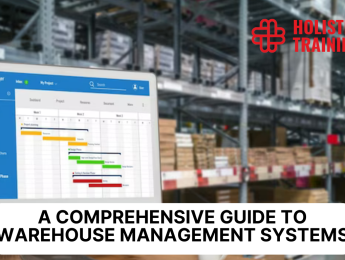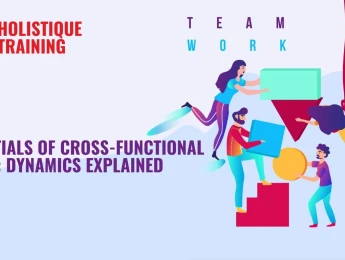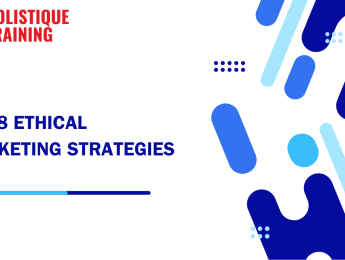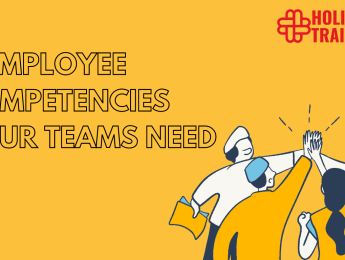- Table of Contents
- Introduction
- What Is Team Coordination?
- Why Is Team Coordination Important?
- 1. Maximises Productivity:
- 2. Enhances Innovation:
- 3. Improves Problem-Solving:
- 4. Builds a Positive Work Environment:
- 5. Ensures Timely Project Delivery:
- 6. Enhances Employee Skill Development:
- 7. Boosts Adaptability and Resilience:
- 8. Strengthens Client and Stakeholder Relationships:
- 12 Tips to Improve Team Coordination
- 1. Establish Clear Goals and Roles
- 2. Foster Open Communication
- 3. Embrace Diversity
- 4. Promote Trust and Psychological Safety
- 5. Implement Effective Project Management Tools
- 6. Conduct Regular Team Building Activities
- 7. Provide Training and Skill Development
- 8. Encourage Autonomy and Accountability
- 9. Recognise and Celebrate Achievements
- 10. Foster a Culture of Adaptability
- 11. Regularly Evaluate and Adjust Strategies
- 12. Promote Work-Life Balance
- Difference Between In-office and Remote Team Coordination (& How to Manage Both)
- 1. Define Clear Communication Channels
- 2. Schedule Regular Virtual Meetings
- 3. Encourage Inclusivity
- 4. Establish Time-bound Goals
- 5. Leverage Collaboration Tools
- 6. Encourage Team Bonding
- 7. Ensure Availability and Responsiveness
- 8. Promote Documentation
- 9. Emphasise Trust and Autonomy
- 10. Facilitate Learning and Development
- 11. Regular Team Check-ins
- 12. Acknowledge Achievements
- Team Coordination in the Presence of AI
- 1. Understand AI’s Capabilities and Limitations
- 2. Foster a Collaborative Environment
- 3. Continuous Learning and Adaptation
- 4. Ethical Considerations
- Conclusion
Introduction
Team coordination is the lifeblood of any successful organisation. It’s the intricate dance of individuals working harmoniously towards shared goals. Effective team coordination is more critical than ever in today's fast-paced, interconnected world. It ensures the seamless flow of ideas and tasks and fosters a sense of unity and purpose among team members. In this comprehensive guide, we will delve deep into the nuances of team coordination, exploring its significance, practical tips for improvement, and strategies tailored for both in-office and remote environments. Moreover, we will discuss how team coordination adapts in the presence of artificial intelligence (AI). So, let’s embark on this journey to master the art of teama coordination.
What Is Team Coordination?
Team coordination is the art of synchronising individual efforts within a group to achieve a common goal. It involves effective communication, collaboration, and task allocation among team members. At its core, team coordination is about leveraging each team member's unique strengths to create a synergy that propels the collective towards success.
Why Is Team Coordination Important?
Effective team coordination is the backbone of a thriving organisation, catalysing numerous advantages that directly impact the success and sustainability of the business. Let's delve into why team coordination holds paramount importance:
1. Maximises Productivity:
Team members can pool their skills and resources efficiently when they work cohesively. Tasks are completed with minimum duplication of efforts, leading to higher productivity levels. This optimised workflow ensures that the organisation utilises its workforce to its full potential, making the most of available talents.
2. Enhances Innovation:
In a well-coordinated team, diverse perspectives and ideas collide, fostering a rich environment for innovation. Individuals collaborating and sharing their unique viewpoints create an intellectual synergy that sparks creativity. Innovations often emerge from the intersection of different ideas and experiences, making team coordination the breeding ground for groundbreaking solutions.
3. Improves Problem-Solving:
Complex challenges are best tackled by teams that can brainstorm, analyse, and synthesise information collectively. A coordinated team can identify issues swiftly, assess various solutions, and implement the most effective strategies. The synergy between team members enhances problem-solving abilities, allowing the organisation to overcome hurdles with agility and precision.
4. Builds a Positive Work Environment:
Effective coordination fosters a sense of belonging and camaraderie among team members. When individuals feel valued, heard, and supported, they are more likely to be engaged and motivated in their work. This positive work environment boosts morale, reduces stress, and promotes job satisfaction. Team members are happier and more loyal, and, in turn, contribute positively to the organisational culture.
5. Ensures Timely Project Delivery:
Time management is a critical aspect of any project. Proper team coordination ensures tasks are allocated, monitored, and completed within specified timelines. Deadlines are met consistently, leading to reliable project delivery. Timely project completion enhances the organisation’s reputation, instilling trust in clients and stakeholders.
6. Enhances Employee Skill Development:
In a coordinated team, knowledge and skills are shared openly. Team members learn from one another, acquiring new skills and honing existing ones. This continuous learning environment not only elevates the individual capabilities of team members but also enriches the overall skill set of the entire team. As team members grow, so does the collective competency of the organisation.
7. Boosts Adaptability and Resilience:
In today’s fast-paced business landscape, adaptability is key to survival. Coordinated teams are better equipped to adapt to change. They can quickly reallocate resources, adjust strategies, and pivot when necessary. This adaptability enhances the organisation’s resilience, effectively navigating challenges and seizing new opportunities.
8. Strengthens Client and Stakeholder Relationships:
Clients and stakeholders appreciate working with organisations that exhibit seamless teamwork. A well-coordinated team ensures that client requirements are understood clearly, communicated effectively, and met efficiently. This high level of service strengthens relationships, leading to client satisfaction, repeat business, and positive word-of-mouth referrals.
In essence, team coordination is the cornerstone for successful organisations' success. It is not just a means to an end but a fundamental element that sustains a positive organisational culture, drives innovation, and ensures the organisation's continued growth and prosperity. Embracing and nurturing effective team coordination is an investment that yields significant returns, both in the short term and in the long run.
12 Tips to Improve Team Coordination
Effective team coordination is an intricate balance of communication, collaboration, and mutual respect among team members. Implementing these twelve tips can significantly enhance the cohesion and productivity of your team, ensuring that everyone is aligned towards common goals:
1. Establish Clear Goals and Roles
Begin by defining specific, achievable goals for the team. Break down these goals into individual tasks and assign roles based on team members' strengths and expertise. When everyone knows what is expected of them, they can focus their efforts more effectively.
2. Foster Open Communication
Encourage a culture of open communication where team members feel comfortable sharing ideas, concerns, and feedback. Active listening and clear articulation are fundamental. Regular team meetings, both formal and informal, provide platforms for exchanging thoughts and ensuring everyone is on the same page.
3. Embrace Diversity
Value the diversity within your team. Different backgrounds, experiences, and perspectives bring various ideas to the table. Embrace these differences and use them as catalysts for innovation. A diverse team can approach problems from multiple angles, leading to more creative solutions.
4. Promote Trust and Psychological Safety
Trust is the foundation of any successful team. Foster an environment where team members trust one another’s intentions and capabilities. Additionally, it creates psychological safety, ensuring team members feel safe to take risks, share unconventional ideas, and admit mistakes without fear of ridicule or punishment.
5. Implement Effective Project Management Tools
Leverage advanced project management tools to streamline task allocation, progress tracking, and collaboration. Tools like Asana, Trello, or Jira facilitate transparency and enable everyone to stay informed about project developments, deadlines, and responsibilities.
6. Conduct Regular Team Building Activities
Team building activities, whether they are workshops, outdoor exercises, or virtual events, strengthen the bonds among team members. These activities foster a sense of camaraderie, encourage collaboration, and promote understanding, making it easier for team members to work together effectively.
7. Provide Training and Skill Development
According to ProofHub, 59% of millennials emphasised the paramount importance of developmental opportunities in their decision-making process when considering job applications. Invest in training programmes and workshops that enhance the skills and knowledge of team members. Continuous learning improves individual capacities and equips the team with updated tools and techniques, enhancing their collective proficiency.
8. Encourage Autonomy and Accountability
Empower team members to make decisions within their areas of responsibility. Autonomy fosters a sense of ownership, boosting motivation and creativity. However, with autonomy comes accountability. Ensure that team members are responsible for the outcomes of their decisions, promoting a sense of responsibility.
9. Recognise and Celebrate Achievements
A recent survey showed that the most highly valued aspect of the workplace for 37% of employees is recognition for their contributions. Acknowledge and celebrate both individual and team achievements. Recognition can be as simple as a heartfelt “thank you” or as elaborate as awards and incentives. Celebrations, big or small, reinforce a positive team spirit, motivating team members to sustain their efforts.
10. Foster a Culture of Adaptability
Encourage a culture where team members are open to change. The business landscape is dynamic, and the ability to adapt is invaluable. Embrace new technologies, methodologies, and ideas. A team that adapts readily can tackle challenges more effectively and seize new opportunities.
11. Regularly Evaluate and Adjust Strategies
Periodically assess the team’s performance and the effectiveness of coordination strategies. Use feedback from team members, stakeholders, and clients to evaluate the team’s strengths and areas for improvement. Based on these evaluations, be willing to adjust strategies and processes to enhance team coordination continually.
12. Promote Work-Life Balance
Balance is essential for sustained productivity and well-being. Encourage a healthy work-life balance among team members. Avoid overloading them with excessive tasks, unrealistic deadlines, or constant overtime. Encourage breaks, vacations, and time off, ensuring team members remain energised, motivated, and focused on their tasks.
Incorporating these tips into your team's routine can transform coordination from a challenge into a seamless, productive process. Remember, team coordination is an ongoing effort that requires attention, communication, and adaptability. By fostering an environment of trust, open communication, and continuous learning, your team can achieve remarkable feats together.

Difference Between In-office and Remote Team Coordination (& How to Manage Both)
In-office and remote team coordination present unique challenges. In traditional office setups, face-to-face interactions facilitate quick decision-making and spontaneous discussions. On the other hand, remote teams rely heavily on digital communication tools, requiring structured communication channels to maintain cohesion. To manage both effectively:
1. Define Clear Communication Channels
- In-Office Teams: Face-to-face interactions are natural, allowing for instant communication. Meetings, discussions, and brainstorming sessions can happen organically.
- Remote Teams: Digital communication tools like Slack, Microsoft Teams, or Zoom are crucial. Establish specific channels for different topics to ensure organized conversations.
2. Schedule Regular Virtual Meetings
- In-Office Teams: Meetings can be impromptu and physical, often involving visual aids or whiteboards for better understanding.
- Remote Teams: Regular virtual meetings are essential. Video conferences facilitate face-to-face interactions, maintaining team cohesion. Schedule daily check-ins and weekly team meetings to foster connection.
3. Encourage Inclusivity
- In-Office Teams: Discussions can sometimes be dominated by outspoken team members.
- Remote Teams: Encourage quieter team members to participate. Use techniques like round-robin discussions to ensure everyone's voice is heard.
4. Establish Time-bound Goals
- In-Office Teams: Quick, real-time adjustments can be made based on immediate feedback.
- Remote Teams: Set specific, time-bound goals. Regularly check progress using project management tools. Clearly defined milestones give remote workers a sense of direction.
5. Leverage Collaboration Tools
As per Deloitte's research findings, employees engaged in collaborative efforts exhibit a 15% increase in work efficiency. Moreover, this collaboration enhances innovation by 60%, and an impressive 73% improvement in the overall quality of work is observed. Here’s how you can leverage collaboration tools no matter the nature of the workplace:
- In-Office Teams: Physical proximity allows quick sharing of documents and feedback.
- Remote Teams: For seamless collaboration, use virtual whiteboards, shared document editing tools (Google Docs, Dropbox), and project management software (Trello, Asana). These tools facilitate real-time updates, ensuring everyone is on the same page despite geographical distances.
6. Encourage Team Bonding
- In-Office Teams: Social interactions often happen naturally during breaks, fostering team camaraderie.
- Remote Teams: Organise virtual team-building activities, casual online coffee breaks, or games. These activities create a sense of belonging, despite the physical distance.
7. Ensure Availability and Responsiveness
- In-Office Teams: Immediate responses are expected due to proximity.
- Remote Teams: Set clear communication hours to avoid burnout. Respect different time zones and ensure team members have overlapping working hours for real-time collaboration.
8. Promote Documentation
- In-Office Teams: Information might be verbally communicated and easily forgotten.
- Remote Teams: Encourage thorough documentation of discussions, decisions, and action items. Use shared documents and project management tools. This ensures everyone has access to critical information, promoting transparency and accountability.
9. Emphasise Trust and Autonomy
- In-Office Teams: Supervision is more direct.
- Remote Teams: Trust team members to manage their time and tasks. Provide clear objectives and guidelines, allowing autonomy. Trust cultivates responsibility and ownership.
10. Facilitate Learning and Development
- In-Office Teams: Learning often happens through direct mentorship.
- Remote Teams: Encourage online learning platforms, webinars, and virtual workshops. Invest in remote-specific skill development to keep team members updated and engaged.
11. Regular Team Check-ins
- In-Office Teams: Informal check-ins can happen during breaks or at the desk.
- Remote Teams: Schedule regular check-ins. Use video calls to maintain a personal connection. Discuss work progress, challenges, and goals. Regular communication fosters a sense of belonging and accountability.
12. Acknowledge Achievements
- In-Office Teams: Recognition can be immediate, in person.
- Remote Teams: Celebrate achievements virtually. Use team meetings to acknowledge hard work. Consider digital certificates or public recognition to boost morale.
Recognising these differences and tailoring your management strategies accordingly, you can create a harmonious blend of in-office and remote team coordination. Adaptability and understanding the unique dynamics of each setting are key to effective team management in today’s diverse work environment.
Aspect | In-Office Team Coordination | Remote Team Coordination |
Communication | Face-to-face interactions, immediate feedback | Reliance on digital tools, scheduled virtual meetings |
Collaboration Tools | Physical presence, whiteboards, instant document sharing | Virtual whiteboards, project management software, shared documents |
Team Bonding | Informal social interactions, physical proximity | Virtual team-building activities, online coffee breaks |
Availability | Immediate responses, proximity advantages | Defined communication hours, respect for different time zones |
Documentation | Oral communication, instant clarification | Detailed documentation, shared documents, transparent updates |
Supervision | Direct supervision, immediate guidance | Trust-based autonomy, clear objectives, periodic check-ins |
Learning | Mentorship, hands-on training | Online learning platforms, webinars, virtual workshops |
Recognition | Immediate, in-person acknowledgment | Virtual celebrations, digital certificates, public recognition |
Table 1: Key differences between in-office and remote team coordination
Team Coordination in the Presence of AI
Integrating AI into the workplace introduces exciting possibilities and challenges for team coordination. AI-powered tools can automate repetitive tasks, analyse vast datasets, and provide valuable insights. However, managing AI alongside human team members requires a nuanced approach:
1. Understand AI’s Capabilities and Limitations
Understanding AI's capabilities and limitations is essential for effective integration. While AI excels in data analysis and automation, it lacks human intuition and contextual understanding. Teams should acknowledge these limitations and use AI as a supplementary tool, combining its analytical power with human creativity and critical thinking.
2. Foster a Collaborative Environment
Creating a collaborative synergy between AI systems and human team members is paramount. AI can process vast datasets, providing valuable insights, but human interpretation is crucial to infuse context and make strategic decisions. Encourage a collaborative atmosphere where team members feel empowered to question AI-generated insights, ensuring a well-rounded decision-making process.
3. Continuous Learning and Adaptation
AI technologies are in a constant state of evolution. Teams must foster a culture of continuous learning and adaptability. Encourage team members to stay updated with the latest advancements in AI, understand emerging trends, and adapt their strategies to leverage AI’s evolving capabilities effectively. A proactive approach ensures that the team maximises the benefits of AI integration.
4. Ethical Considerations
AI raises ethical questions regarding data privacy, bias, and job displacement. Teams must engage in transparent discussions about these ethical concerns. Involve team members in ethical AI guidelines and decision-making processes. Addressing these considerations ensures that AI integration aligns with the organisation’s ethical values, promoting trust and responsible AI use.
Incorporating these aspects into team coordination strategies in the presence of AI fosters a balanced and symbiotic relationship between human intelligence and artificial intelligence. This harmony harnesses both strengths, leading to enhanced productivity, innovative solutions, and ethically sound practices within the organisation.
Conclusion
Mastering team coordination is a dynamic process that requires adaptability, effective communication, and a deep understanding of the unique dynamics of your team. By following the tips outlined in this guide and embracing the challenges posed by both in-office and remote environments, your team can navigate the complexities of the modern workplace with finesse. Moreover, integrating AI into your coordination strategies can propel your team towards unprecedented levels of efficiency and innovation. Remember, team coordination is not just a task; it's an ongoing journey towards excellence, where each step taken brings your team closer to its full potential.
If you're eager to dive even deeper into these strategies and elevate your team coordination skills to new heights, our course ‘How to Build a Cohesive Team for Excellence’ is your gateway to success. Join us now to unlock the secrets of seamless teamwork, innovative problem-solving, and sustained excellence. Enrol today and transform your team into a powerhouse of productivity and creativity!


















